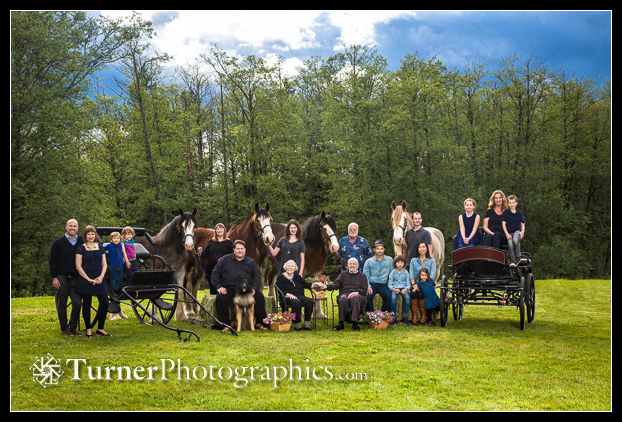
Early this spring I got a message from Judy Davis about photographing her extended family. She’d purchased a certificate at the Lighthouse Mission auction and wondered whether I’d be available on Mother’s Day or Father’s Day to create their portrait. We settled on Mother’s Day afternoon when their whole family would be together at their place outside Snohomish.
As I do for all my family portrait customers, I discussed clothing choices, whether we needed to schedule around nap times, and locations for the session. I stopped by their home outside Snohomish for a site visit on my way to another event east of the mountains. Judy’s husband, Bruce, was home that day and showed me around. We picked a place in their backyard with trees in the background that would have the sun behind everyone when we set up the portrait. We talked about having the grass mowed a few days ahead, as well as where we’d place their horse-drawn carriages. Did I mention that this portrait would include 19 people ages 3 to 93, a dog, and four Clydesdale horses?
With a plan in place, I arrived at the appointed time on Mother’s Day afternoon. It was a little chaotic with so many people in the house, but everyone was either dressed for their portrait or finishing getting ready. I set up my light, put my camera on my tripod, and made a few test shots with a volunteer family member. Then we herded everyone out of the house.
With large multi-generation families I like to group each individual family together so I asked all the kids to stand with their parents. That way I could see who went with whom. I began setting up the shot by seating the great-grandparents in the middle. Then I arranged each family around them, with some on the carriages and some on the ground, looking for nice comfortable individual family groupings that also had a good visual rhythm as a whole. I photographed a version without the horses first, just in case they didn’t cooperate.
Then Judy and her designated horse handlers brought the Clydesdales up from the barn and we arranged them behind the people, with one person holding the reins of each horse. I now had 24 pair of eyes to get looking at the camera at the same time! The horses needed to have their ears forward, showing attention, too.
I never count to three and have people say “cheese” because that produces fake smiles (and doesn’t work for horses anyway). I’m lively and animated behind the camera. Since I use a tripod and no one is moving, I can look people in the eye as I talk, make silly noises, and throw my magic hat in the air. For the horses, I have an app on my phone that plays horse sounds and almost always gets their ears up. Kids of all ages seem to get a smile with the horse sounds, too.

Once I finished with the large group, I set about photographing individual families and other groups on Judy’s shot list. As I worked, Bruce came over and pointed out that rain was on the way. Fast. We sent everyone back in the house, I stashed my camera and light under dry cover, and we developed Plan B. I suggested the barn and walked down to take a look. Judy was skeptical since it wasn’t spotlessly clean, but I convinced her that portraits there would look great. I carried my gear down and set up, then started bringing groups down for their portraits. When she saw the finished portraits she was pleasantly surprised how good her barn looked.

With everyone photographed, I packed up my gear. Then they invited me in for a snack and a beverage before I headed home. I don’t expect that from my clients, but am always grateful when it happens.
A few weeks later Judy came to the studio for her viewing and purchasing appointment. She ended up placing a nice order, including a 20” x 40” Signature Canvas portrait that will go on the wall in the room where Bruce and Judy spend most of their time. It will be a constant reminder of the love shared among all the members of their extended family. I’m honored to have been trusted with the Davis family memories.
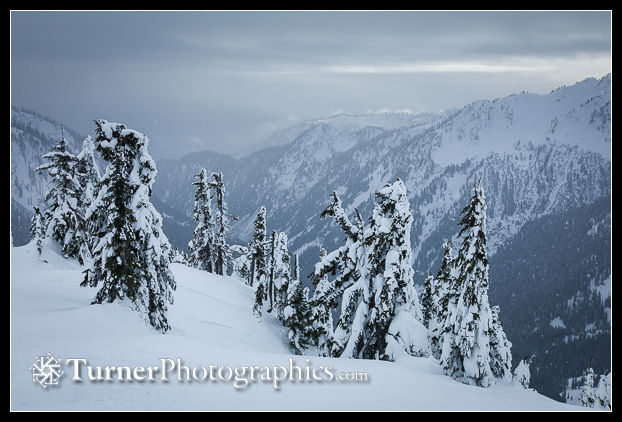


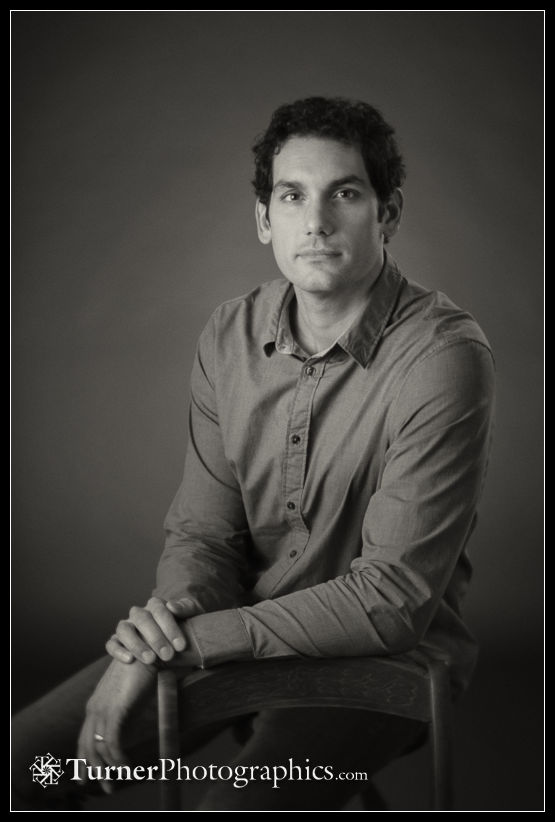
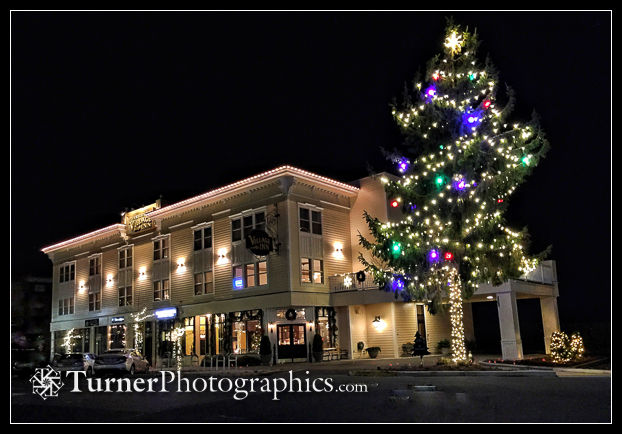
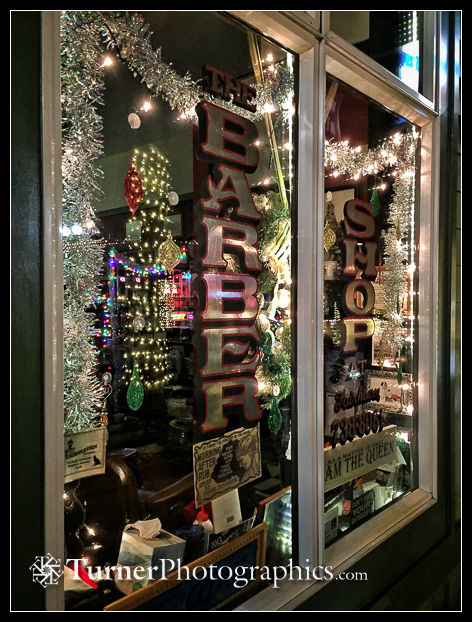
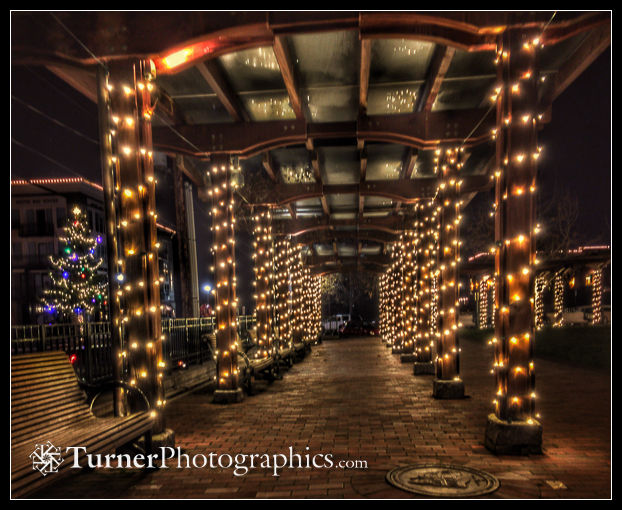
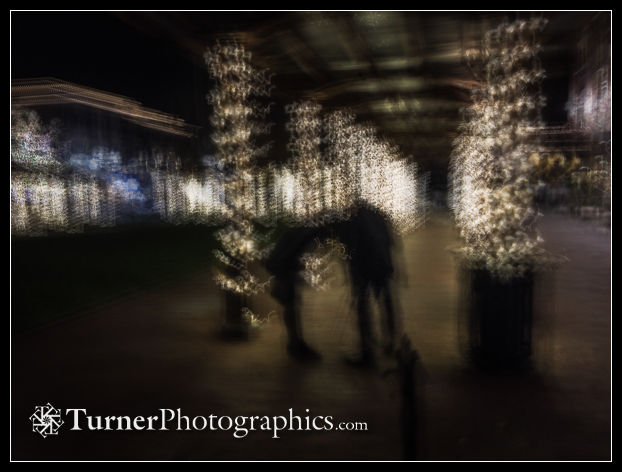
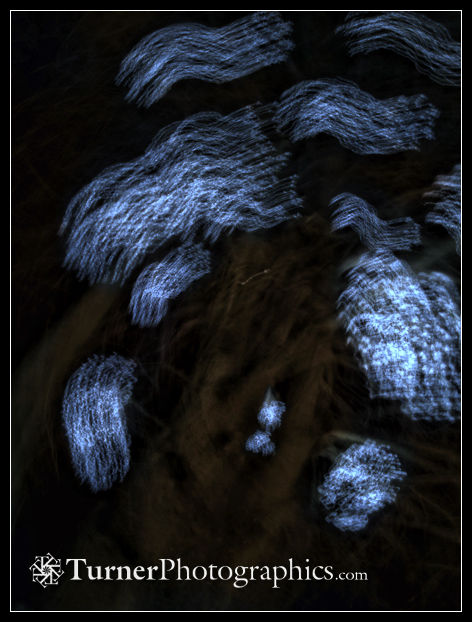



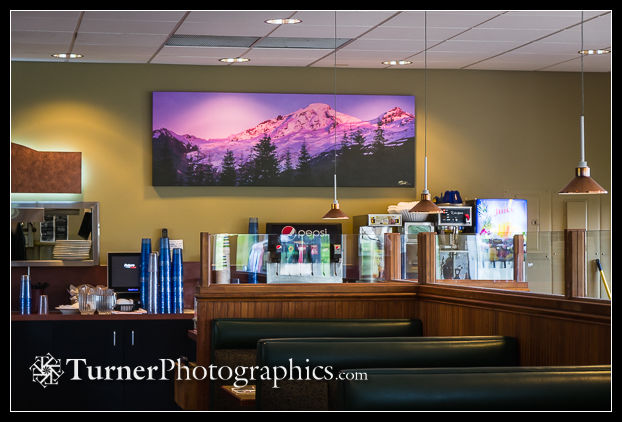
![Brittlebush, Fremont Pincushion, Desert Dandelions, Burrobush, Ocotillo early morning [Encelia farinosa; Chaenactis fremontii; Malacothrix glabrata; Fouquieria splendens]. Anza-Borrego Desert SP Coyote Canyon, Borrego Springs, WA. © Mark Turner [1700293] Brittlebush and More](/wp-content/uploads/2017/03/Turner_1700293.jpg)

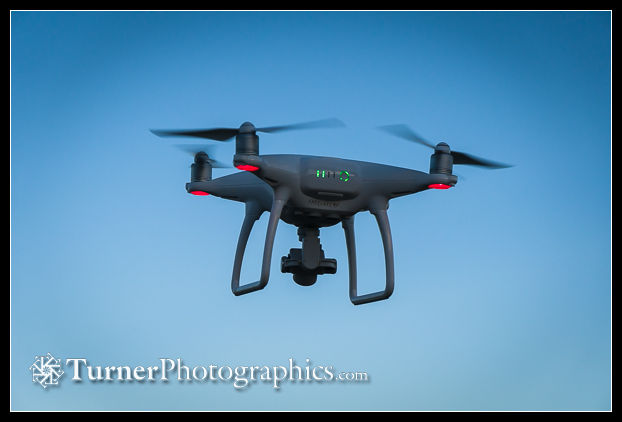


![Vernal Fall. Yosemite NP Mist Tr., CA. © Mark Turner [1600765] Vernal Fall. Yosemite NP](/wp-content/uploads/2016/08/Turner_1600765-Edit.jpg)